
I am interested in astronomy and digital photography,
so I suppose it's
natural that I am experimenting with using a
Nikon Coolpix 900 digital
camera to photograph bright astronomical objects
through a telescope.
I say "bright" because the CCDs in digital cameras
are not sensitive
enough to acquire dim objects. So,
it seems that digital camera astro
photography is limited to the moon and bright
planets.
The moon is an easy target for a digital camera
through a telescope. These
pictures were taken through a Celestron C102
4" refractor on a Super Polaris
DX mount with various eyepieces but primarily
with the 30mm Celestron Ultima
(for the lunar shots) and the 9mm Nagler (for
the shots of Jupiter).
It is important to adjust the camera to its widest
angle of view in order
to make it easier to acquire the image from the
eyepiece. Once the image
registers on the camera's CCD it is possible
to "zoom in" somewhat if you
have a bracket or something to hold the camera
in position. Excellent
results on the moon are quite possible.
These images have been reduced
in both size and quality from the original 450kilobytes:

My next project will be a page with photographs of the moon in all of
its phases,
and higher magnification images of various lunar features.

The planets are somewhat more elusive. There is a magnification
limit imposed
by the "seeing" or atmospheric conditions (I observe from a suburban
location,
with plenty of heating currents etc.) But here are
representative images
of Jupiter (all of which suffer from being cropped / sized etc. to
fit this page:
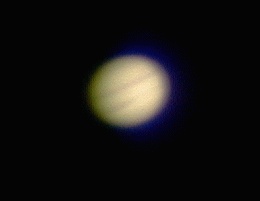

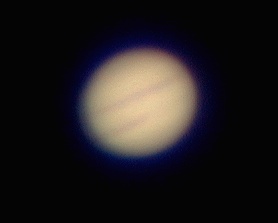
The following shots of jupiter easily show the 'great tan spot', and
the end of a transit. A moon is visible
just merging out of the disk of the planet adjacent to the lower of
the equatorial belts (as pictured), the
sequence is actually right to left:

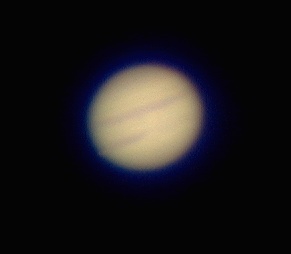
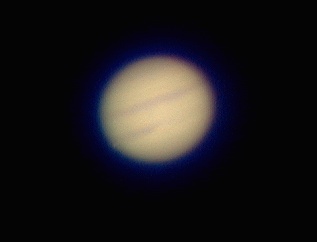
Further experimentation, now with a Nikon Coolpix 950 using manual control
of the shutter. Shot through a
C5 under mediocre seeing. Using Scopetronix "digital T" system,
which mates a digital camera to an eyepiece
using threaded rings (I highly recommend this system!).
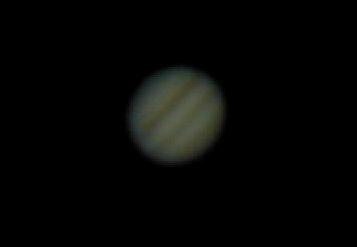

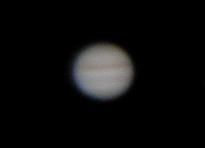

I am still experimenting with techniques for making astro image capture
on Digital
cameras more satisfying.